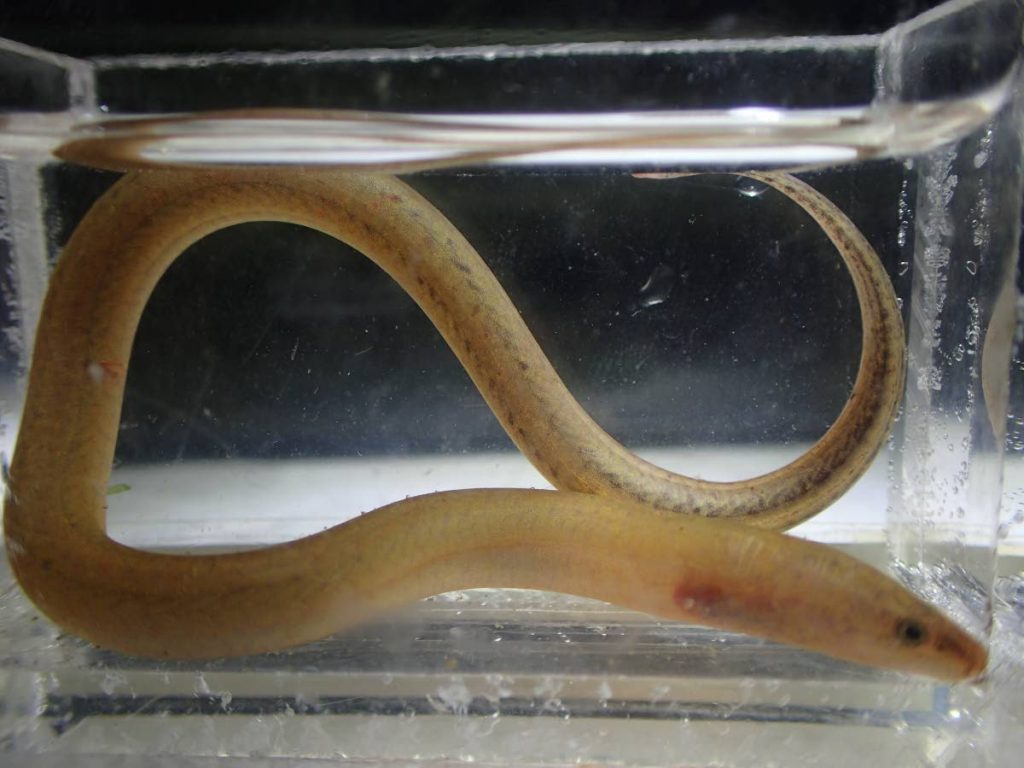Zangee, the swamp eel, is really a fish!

Have you ever heard of a zangee? Or maybe you’ve seen one in the river?
Here in TT, the swamp eel (Synbranchus marmoratus) is called a zangee.
But the zangee is not really an eel; it’s actually an elongated fish.
It has a yellowish body with black spots and can grow up to 150 centimetres in length, according to a fact sheet from UWI.
Dr Ryan Mohammed, an aquatic ecologist, spoke to Newsday Kids about the zangee. As an aquatic ecologist, Dr Mohammed has researched a wide variety of species found in ecosystems like mud volcanoes, wetlands, rivers, estuaries, and reefs. He particularly loves doing research on aquaculture (the farming of fishes) and alien invasive species.
“If you see a zangee...the first thing to know is that it’s not a snake or a worm; it’s definitely a fish.
“Zangees are found in a wide range of habits. They are able to survive in slow moving as well as fast moving water.
“They can also survive in clear or turbid (cloudy) water. You can find them among rocky or muddy substrate (the surface on or in which organisms live),” said Dr Mohammed.
Zangees can also survive on land. To do this, they can either breathe through their skin or get oxygen by gulping air in their mouths.
When zangees gulp air, it is filtered in their digestive system to extract oxygen.
Sometimes they may gulp so much air that their head can puff up.
Dr Mohammed said, “They (zangees) can move from one body of water to the next across land.
“So, it’s not uncommon to see zangees trying to cross the road especially in times when there’s lots of rainfall.
“If they are trying to avoid getting washed away (in waterways during heavy rainfall), they’ll probably crawl out of the water or go somewhere moist just to wait out the bad weather.”
Once the land is moist enough, zangees can survive for hours on land.
During the dry season, if there is a drastic drop in water levels in waterways, zangees can dig burrows in mud.
These burrows can reach as far below the ground as the water table (groundwater).
In the burrows, zangees become inactive until there is enough water for them to surface again.
If you are curious enough to hold one, Dr Mohammed said it’s safe to do so but you should know that they are slippery. Don’t hold them for too long so that you don’t harm them.
It’s always best to leave wildlife in their natural habitats, though, so be sure to leave zangees where you find them and don’t carry them home.
While they are common in Trinidad’s rivers, zangees were only recently documented in Tobago in the last ten years.
So, what role do zangees play in ecosystems?
“They play a scavenging function in the environment as they would eat carrion (animal carcasses) and decaying matter.”
Zangees also prey on small fishes like the river guppy which they hunt using their sense of smell.



Comments
"Zangee, the swamp eel, is really a fish!"